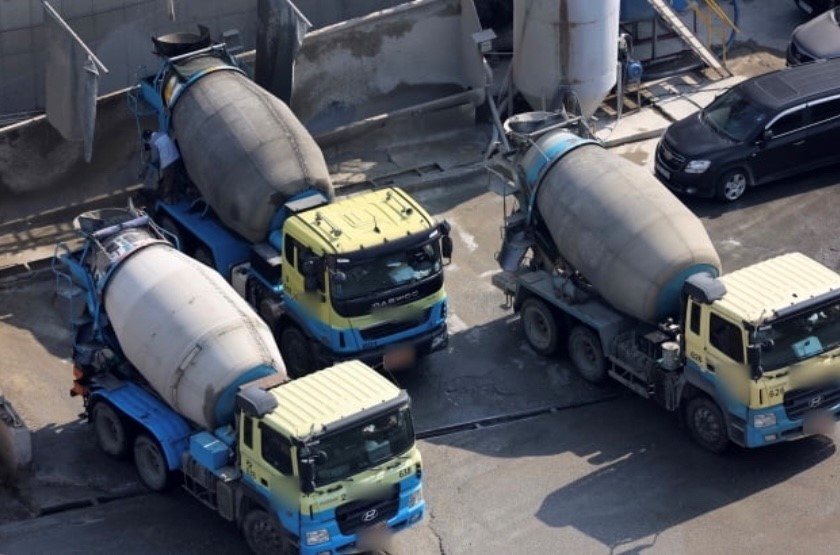 |
| ▲ This is a photograph of the Construction Industry environment using cement (Source: Korean economy) |
On April 2, the National Institute of Environmental Research, analyzed the heavy metal content of the products of three major domestic cement companies in the European Union method. As a result, it was discovered that the level of carcinogens in major cement products produced in Korea, were more than twice as high as the safety standards applied by the European Union (EU), sparking controversy among construction workers and netizens.
The carcinogen in question in this study is, "hexavalent chromium," a heavy metal substance mainly detected in cement, made by burning waste. Since, “hexavalent chromium,” is also a first-class carcinogen designated by the International Cancer Research Institute, the content of hexavalent chromium in cement distributed in the market, is currently regulated by law in Europe. Among the three cement products used in the study, the product with the highest detection amount of hexavalent chromium was, "Sampyo Cement," with 9.02 mg per kg being detected. This is about 4.5 times the EU's legal acceptance standard of 2.00 mg per kg. In addition, hexavalent chromium measurements of 4.96 mg and 4.91 mg per kilogram were measured in the remaining products, "Ssangyong Cement," and, "Halla Cement," respectively, exceeding EU legal standards. In other words, the products of the three companies, known as representatives of domestic cement, are treated as illegal products in Europe.
Currently, the Ministry of Environment has been monitoring and making safety judgments on domestic cement products for 14 years, in accordance with safety standards, established by voluntary agreements in the Cement Industry 13 years ago. However, it was only confirmed through this study that the problem is significant when applying EU standards, not domestic standards. The Ministry of Environment has been checking whether the hexavalent chromium in domestic cement products is less than, "20 mg per kg," every month under the, "Plan to Improve Environmental Management of Cement Furnace," established in 2008. *
Last year, the Ministry of Environment announced that only 6.76 mg per kg of hexavalent chromium was detected on average, in domestic cement products, when domestic standards were applied. It was judged that there was no problem with safety because the actual use of hexavalent chromium was lower than the standard value of the autonomous agreement. However, the reality of hexavalent chromium in the construction industry was different. Hexavalent chromium has been specified by the Occupational Disease Control and Prevention Commission as a contacting dermatitis-inducing substance, along with other skin diseases, caused by hexavalent chromium exposure in cement, which are currently recognized as industrial accidents at construction waste treatment sites. The Ministry of Environment is also aware that hexavalent chromium directly poses a threat to the health of construction workers. In addition, as the number of skin diseases estimated to be caused by hexavalent chromium at construction sites is increasing, rapid measures should be taken in changing the criteria for detecting carcinogens in cement.
Roh Woong-rae, who commissioned the National Institute of Environmental Research, said, "The Ministry of Environment has neglected cement products, even though it clearly knows that they contain harmful substances, such as heavy metals. The investigation revealed that they were giving preferential treatment to cement companies by using false standards.". He then argued, "Even now, the Ministry of Environment should hurry to prepare European standards for the safety management of heavy metals in cement." Later, Environment Minister nominee, Han Hwa-jin, gave an answer to Roh's point at a Confirmation Hearing of the National Assembly's Environment and Labor Committee, saying, "It is necessary to discuss the legal standards for heavy metal cement." Based on the results of the analysis conducted by the National Institute of Environmental Research, the Ministry of Environment is reportedly internally considering resetting the appropriate standards for carcinogens in the cement industry.
By Seo Ji-min, cub-reporter jmseo1215@naver.com
<저작권자 © The Campus Journal, 무단 전재 및 재배포 금지>

 KTX Fares to Increase; First Time in 14 Years: Is it an Inevitable Decision
KTX Fares to Increase; First Time in 14 Years: Is it an Inevitable Decision


![[Feature] Successful Robot Dunk Shot: Can Korea Seize the Opportunity to Narrow the Technological Gap?](/news/thumbnail/202503/4113287_1940_2236_v150.jpg)

